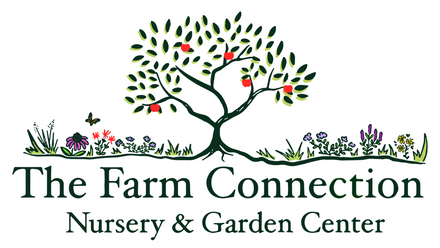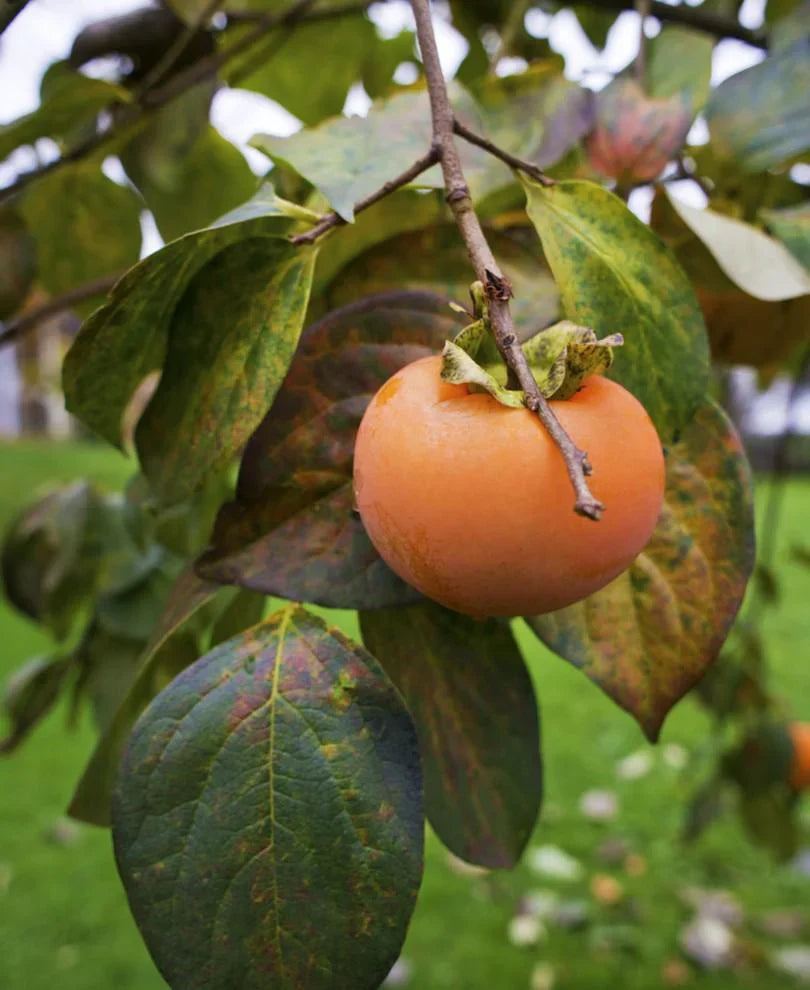Persimmon, Bare Root
Low-Maintenance Tree with Sweet Fall Fruit
Persimmon, Bare Root - Bare Root / 6-18" Seedling is backordered and will ship as soon as it is back in stock.
Couldn't load pickup availability
Delivery and Shipping
Delivery and Shipping
Make sure to thoroughly review our entire "Shipping, Returns, Refunds, and Our Guarantee" page for all relevant details about ordering from our store.
Making a purchase from our store constitutes an agreement to all the conditions outlined in those policies.
We appreciate your support and look forward to being your favorite plant provider!
Subscribe to our newsletter
Sign up for exclusive offers.
Persimmon (Diospyros spp.)
Persimmons are resilient, adaptable fruit trees that bring delicious, honey-sweet fruit and striking fall beauty to food forests, home orchards, and edible landscapes. Depending on the species and cultivar, persimmons can be cold-hardy into USDA Zone 4 (for American types) or thrive in warmer climates down to Zone 10 (for Asian types). Fruits vary from small and seedy to large, seedless, and non-astringent, but all are packed with flavor, nutrition, and visual appeal.
Persimmons typically ripen in late fall, extending your fresh fruit season after apples, pears, and peaches are long finished. Some varieties are non-astringent and can be eaten while firm, while others must fully soften to become sweet and edible. All types are excellent for fresh eating, drying, baking, or even fermentation into vinegar or wine.
The trees are low-maintenance, drought-tolerant once established, and produce valuable food for humans and wildlife alike, especially deer, turkeys, raccoons, and late-season pollinators.
Key Characteristics
-
Late-season fruit with rich, sweet flavor
Persimmons ripen from October into November, providing bright orange fruits with honeyed sweetness. Depending on type, they may be eaten firm or soft. -
Cold-hardy or heat-tolerant, depending on species
American persimmons withstand cold winters down to Zone 4, while Asian varieties thrive in Zones 7–10. Hybrids bridge the gap for cooler climates with larger fruit. -
Valuable wildlife and pollinator habitat
Flowers attract native pollinators in spring, while fall fruits feed birds and mammals well into winter — a keystone food source for wildlife. -
Excellent in food forests and orchard edges
Persimmons integrate beautifully into food forests, edible hedgerows, and silvopasture systems. Their late-season canopy provides food, shade, and beauty. -
Low-input, disease-resistant, and resilient
Generally free from serious pests or diseases, persimmons are easy-care trees for regenerative and organic growing systems.
Product Details
- Sun requirements: Full sun to light shade
- Soil requirements: Medium, well-drained; tolerates a range of soils
- Bloom time: Late spring
- Bloom color: Pale yellow to white (depending on species)
- Fruit qualities: Varies by species (astringent/non-astringent, small to large, seedless or seedy)
- Fruit uses: Fresh eating, drying, baking, fermenting, wildlife food
- Fruit ripening month: Late October to November
- Pollination requirements: Varies by species; some self-fertile, others require pollinator
- USDA Hardiness zones: 4–10 (species dependent)
Whether you're growing for flavor, wildlife, or beauty, persimmons offer exceptional value with little fuss. Once established, they’re among the easiest and most rewarding fruit trees for regenerative gardens.
-
Sun RequirementsFull Sun, Part Sun/Shade
-
Soil RequirementsMedium, Medium-Dry
-
Bloom ColorYellow, Green
-
Bloom TimeMay, June
-
USDA Hardiness ZonesZone 4, Zone 5, Zone 6, Zone 7, Zone 8, Zone 9+
-
Chill Hours400
Payment & Security
Payment methods
Your payment information is processed securely. We do not store credit card details nor have access to your credit card information.




